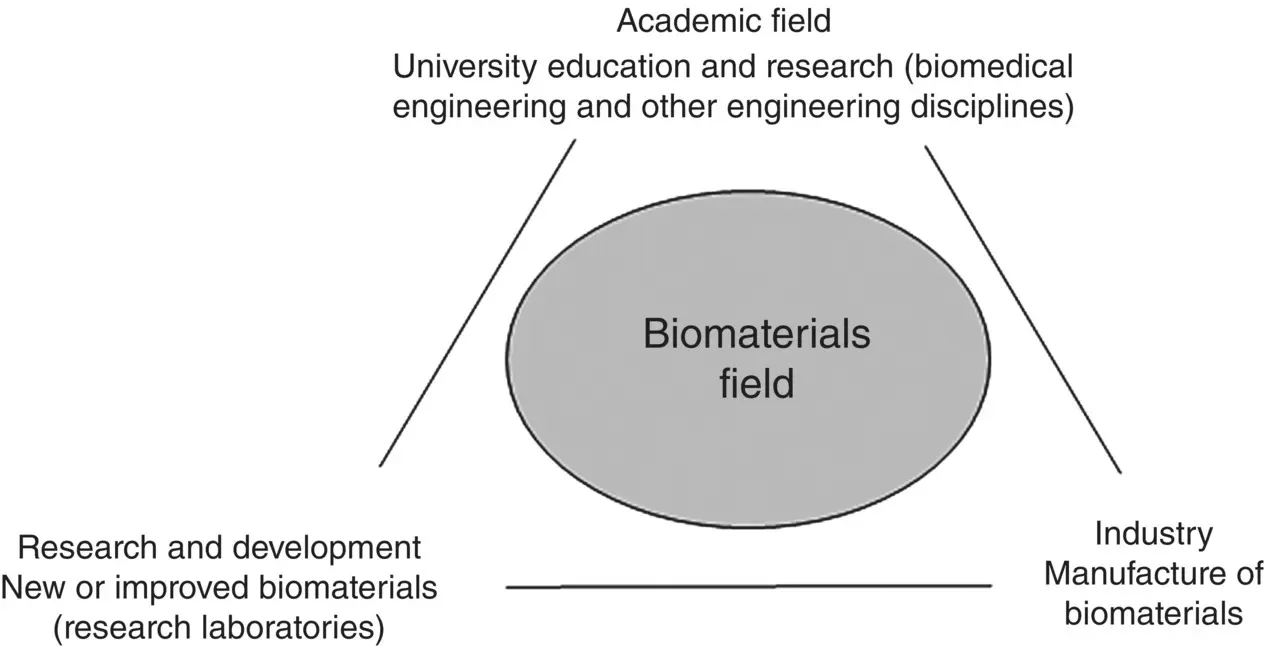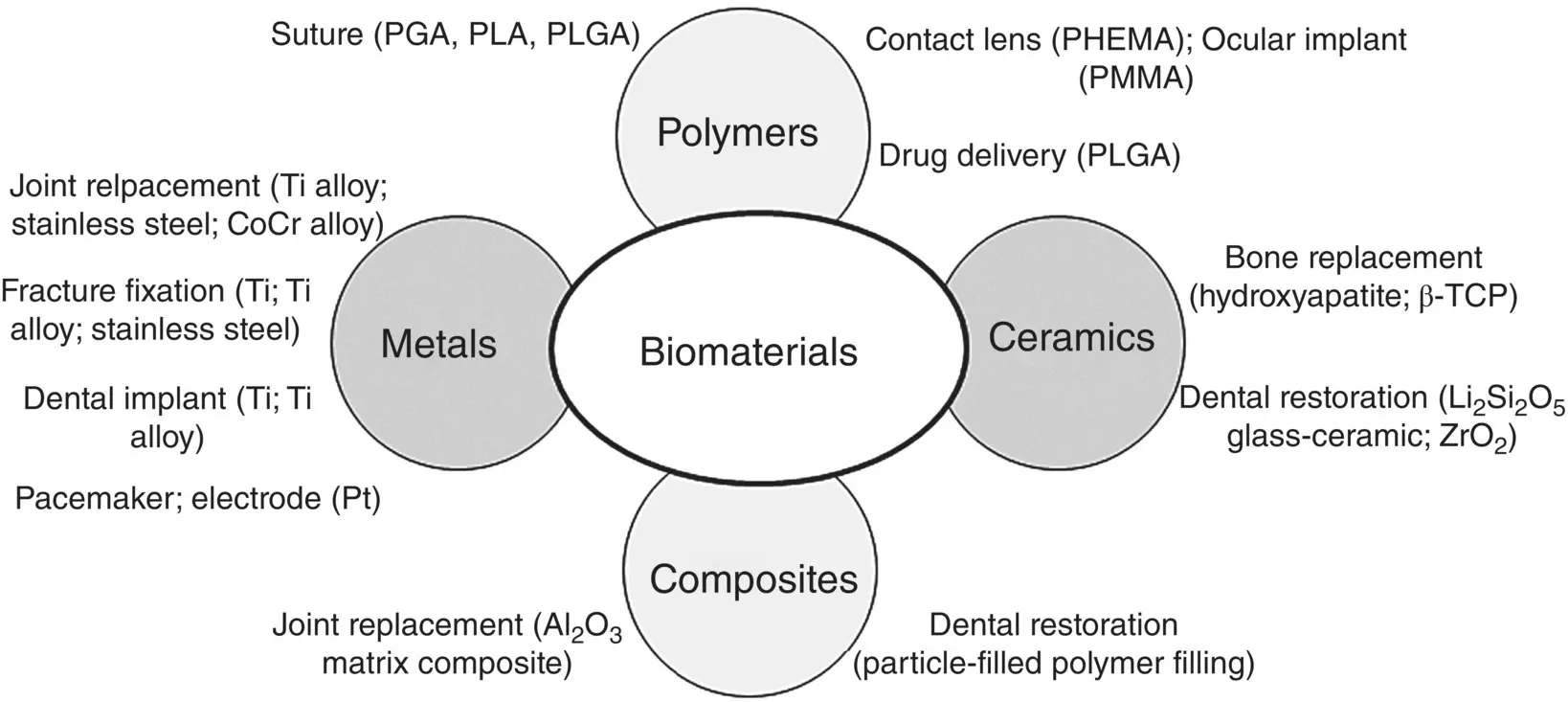Mohamed N. Rahaman - Materials for Biomedical Engineering
Здесь есть возможность читать онлайн «Mohamed N. Rahaman - Materials for Biomedical Engineering» — ознакомительный отрывок электронной книги совершенно бесплатно, а после прочтения отрывка купить полную версию. В некоторых случаях можно слушать аудио, скачать через торрент в формате fb2 и присутствует краткое содержание. Жанр: unrecognised, на английском языке. Описание произведения, (предисловие) а так же отзывы посетителей доступны на портале библиотеки ЛибКат.
- Название:Materials for Biomedical Engineering
- Автор:
- Жанр:
- Год:неизвестен
- ISBN:нет данных
- Рейтинг книги:4 / 5. Голосов: 1
-
Избранное:Добавить в избранное
- Отзывы:
-
Ваша оценка:
- 80
- 1
- 2
- 3
- 4
- 5
Materials for Biomedical Engineering: краткое содержание, описание и аннотация
Предлагаем к чтению аннотацию, описание, краткое содержание или предисловие (зависит от того, что написал сам автор книги «Materials for Biomedical Engineering»). Если вы не нашли необходимую информацию о книге — напишите в комментариях, мы постараемся отыскать её.
A comprehensive yet accessible introductory textbook designed for one-semester courses in biomaterials Materials for Biomedical Engineering: Fundamentals and Applications
Materials for Biomedical Engineering: Fundamentals and Applications
Materials for Biomedical Engineering — читать онлайн ознакомительный отрывок
Ниже представлен текст книги, разбитый по страницам. Система сохранения места последней прочитанной страницы, позволяет с удобством читать онлайн бесплатно книгу «Materials for Biomedical Engineering», без необходимости каждый раз заново искать на чём Вы остановились. Поставьте закладку, и сможете в любой момент перейти на страницу, на которой закончили чтение.
Интервал:
Закладка:

Figure 1.2 Schematic showing the major components of the biomaterials field.
Outside of academic institutions, biomaterials are also an important area of research, development, and manufacturing in several industries, such as in the production of medical devices, dental restorations, and devices for drug delivery. The size of companies that manufacture biomaterials and devices for these applications cover a wide range, from small start‐up companies to large established companies that are among the so‐called Fortune 500 companies in the United States. The commercial market for devices that incorporate biomaterials is immense and it is projected to grow at a healthy rate. Estimates of the commercial market and the number of implantable medical devices that incorporate biomaterials annually are presented in Table 1.1.
1.2 Definition and Meaning of Common Terms
Several terms are commonly used in the biomaterials literature and throughout this book. This section provides a description of the meaning and definition of some of these common terms that are particularly relevant to this chapter.
Biomaterial
Our understanding of what a biomaterial is and, consequently, proposed definitions of the term biomaterial have evolved over time in response to advances in science and technology. An early use of the term and the beginnings of the biomaterials field emerged from symposia held in the United States around the late 1960s and early 1970s. One definition, endorsed by a consensus of experts in the field, is
A biomaterial is a nonviable material used in a medical device, intended to interact with biological systems.
As biomaterials evolved, another definition was proposed:
A biomaterial is a material intended to interface with biological systems to evaluate, treat, augment, or replace any tissue, organ or function in the body (Williams 1999).
While these early definitions reflected our understanding and use of biomaterials at that time, they are now too restrictive because of the evolution of biomaterials over the last two to three decades. Biological sciences, as noted earlier, are now playing an increasing role in designing biomaterials. At the same time, advances in engineering have made it possible to create biomaterials with increasing sophistication. Biomaterials are now being studied, developed or created to target specific responses by cells and tissues in the body, regenerate functional tissues and organs, deliver molecules or drugs to target specific cells or tissues, and improve diagnostic imaging of cells and tissues. A recently proposed definition that attempts to capture these more recent advances and broader meaning of the term is:
A biomaterial is a substance that has been engineered to take a form which, alone or as part of a complex system, is used to direct, by control of interactions with components of living systems, the course of any therapeutic or diagnostic procedure (Williams 2014).
Biocompatibility
A widely accepted definition of biocompatibility is:
Biocompatibility refers to the ability of a material to perform with an appropriate host response in a specific application (Williams 1999).
Biocompatibility is the most critical factor that determines the success of implanted biomaterials ( Chapter 16), but the term is often used loosely in the literature. Biocompatibility is not simply a property of the material alone. As biocompatibility refers to the ability of the biomaterial to perform in a specific application, it is a property of the material–tissue system. It should also be recognized that the biocompatibility phenomena of a given material can change, depending on the situation and the implantation time.
Host Response
The host response to a biomaterial refers to the response of cells and tissues of the body, either local or systemic, to the implanted biomaterial.
Categories of Biomaterials
Biomaterials can be categorized in a number of different ways, depending on their source or the property being emphasized. As they are widely used in the literature, we provide a description of the meaning and definition of the more common terms related to these categories.
Natural and Synthetic Biomaterials
Biomaterials can be classified as natural materials or synthetic materials, depending on their source. Natural biomaterials are materials obtained from human and other vertebrate sources, invertebrate organisms, and from plants. They include bone taken from live humans or cadavers, collagen isolated from animal skin and bones, cellulose produced by certain types of bacteria or obtained from plants, silk from spiders, chitin extracted from the shells of crustaceans, alginate produced by seaweed, and hyaluronic acid extracted from rooster combs or from genetically engineered bacteria. Natural biomaterials are typically similar or identical to substances in living organisms.
In comparison, synthetic biomaterials are produced from industrial materials that have commonly undergone some degree of refinement. As illustrated in Figure 1.3, they are composed of:
Metals, including their alloys, such as gold; stainless steels; titanium (Ti) and its alloys;
Ceramics, including glasses and glass‐ceramics, such as aluminum oxide (Al2O3 ); the calcium phosphates hydroxyapatite and β‐tricalcium phosphate; bioactive glasses;
Polymers such as polyethylene (PE); polymethyl methacrylate (PMMA); nylon; silicone (polydimethylsiloxane);
Composites composed of one or more of the abovementioned classes of materials.

Figure 1.3 Schematic of the classes of materials used as biomaterials, along with examples of specific biomaterials in each class.
Metals, ceramics, and polymers are said to make up the primary classes of synthetic biomaterials. Semiconductors are sometimes described as a fourth class of synthetic materials but the few semiconductors that find use as biomaterials typically have structures similar to ceramics. Consequently, in this book, they are included, where appropriate, within the category of ceramics.
Degradable, Nondegradable and Resorbable Biomaterials
Biomaterials can also be classified in terms of their ability to degrade, typically in an aqueous medium such as a phosphate‐buffered saline or the physiological fluid. Degradation refers to the conversion of the material into smaller constituents, such as ions, molecules or fine particles. Degradation of biomaterials in an aqueous environment can occur by chemical attack by water molecules (hydrolysis), enzyme‐mediated hydrolysis, dissolution, oxidative reaction, or some combination of these mechanisms. For example, the synthetic polymer polyglycolic acid has a composition that makes it susceptible to degradation by hydrolysis into smaller molecules composed of glycolic acid.
The term biodegradable is often used in the literature instead of, or interchangeably with, degradable. Sometimes it may be used in a more restrictive sense to describe degradation by enzyme‐mediated reactions in the physiological environment, and so would not include unmediated hydrolysis. Another term is resorbable that, like biodegradable, is often used instead of, or interchangeably with, degradable. This term may be used in a more restrictive sense to emphasize what eventually happens to the biomaterial degradation product composed of ions, molecules, or particles. Commonly, the degradation product (or most of it) is removed from the body via renal clearance, hepatic processing, phagocytosis, or by other processes. Alternatively, the degradation product of some biomaterials can be taken up into the body tissues, and it can then be said to be resorbed back into the body tissues. For example, calcium and phosphate ions produced by the degradation of some calcium phosphate biomaterials can be resorbed into bone as these ions are constituents of bone.
Читать дальшеИнтервал:
Закладка:
Похожие книги на «Materials for Biomedical Engineering»
Представляем Вашему вниманию похожие книги на «Materials for Biomedical Engineering» списком для выбора. Мы отобрали схожую по названию и смыслу литературу в надежде предоставить читателям больше вариантов отыскать новые, интересные, ещё непрочитанные произведения.
Обсуждение, отзывы о книге «Materials for Biomedical Engineering» и просто собственные мнения читателей. Оставьте ваши комментарии, напишите, что Вы думаете о произведении, его смысле или главных героях. Укажите что конкретно понравилось, а что нет, и почему Вы так считаете.












